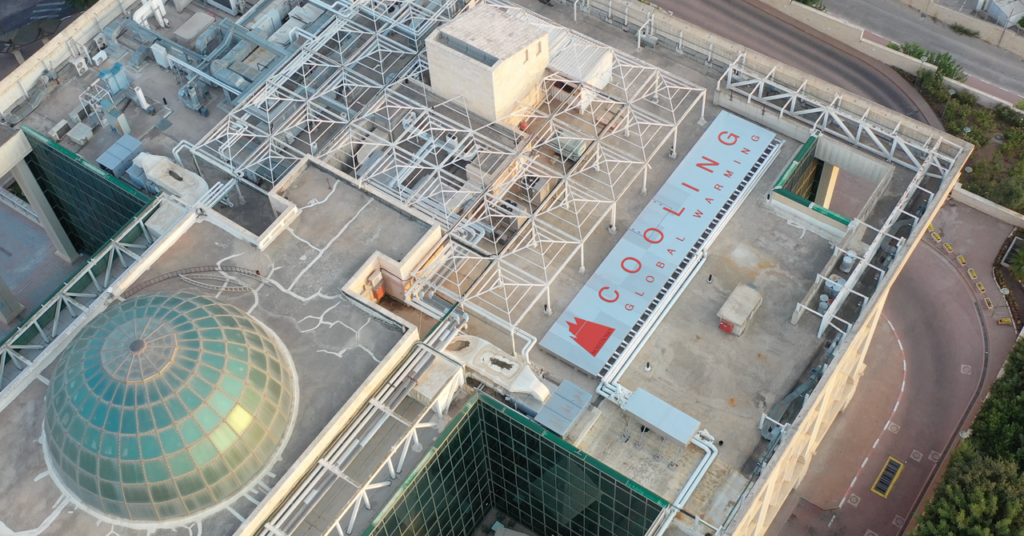The AirJoule system consists of two chambers, each one containing surfaces coated with this special material. They take turns at dehumidifying a flow of air. One chamber is always drying air that is pushed through the system while the other gradually releases the moisture it previously collected. A little heat from the drying chamber gets applied to the moisture-saturated coating in the other, since that helps to encourage the water to drip away for removal. These two cavities swap roles every 10 minutes or so, says Jore.
This process doesn’t cool the air, but it does make it possible to feed dry air to a more traditional air conditioning device, drastically cutting how much energy that secondary device will use. And Jore claims that AirJoule consumes less than 100 watt-hours per liter of water vapor removed—potentially cutting the energy required for dehumidification by as much as 90 percent compared to a traditional dehumidifier.
Montana Technologies wants to sell the components for its AirJoule system to established HVAC firms rather than attempt to build its own consumer products and compete with those firms directly—it calls the approach AirJoule Inside. The firm is also working on a system for the US military, based on the same technology, that can harvest drinkable water from the air. Handy for troops stationed in the desert, one imagines. However, AirJoule is still at the prototype and testing stages.
“We’re building several of these pilot preproduction units for potential customers and partners,” says Jore. “Think rooftops on big-box retailers.”
Rival firm Blue Frontier has also come up with a desiccant-based dehumidifying system, though it uses a liquid desiccant, a salt solution that is capable of collecting moisture from the air. CEO Daniel Betts says that his firm is installing the tech at multiple undisclosed locations around the US—including office spaces, warehouses, and restaurants. Three are live, with six more to be installed by the end of the year.
As with AirJoule, Blue Frontier’s approach would link to a separate, secondary air-conditioning process to cool the dried air. And Blue Frontier must similarly factor in the need to regenerate its desiccant, though this process can be separated out from dehumidification and run at times when there is less demand on the electricity grid. “We are shifting the load of air conditioning from the peak,” says Betts.
Really big air-conditioning systems work differently to the unit that you might have in your house or apartment. Take centralized chiller plants in hotels, for instance. They circulate chilled liquid to guests’ rooms where it is used to cool the air. Chiller plants that drop the temperature of this liquid are reasonably efficient already. But they still have to draw power from the grid at peak times, say in the late afternoon, when everyone wants to cool down from the heat of the day, notes Yaron Ben Nun, founder and chief technology officer at Nostromo Energy, which focuses on energy storage.
To get around this issue, Nostromo has created a system called IceBrick, which it installed last year at two adjacent hotels in California: the Beverly Hilton and the Waldorf Astoria Beverly Hills. The IceBrick, a rectangular module, sits on the roof of a building. It contains nearly 200 insulated capsules of water that can be frozen when off-peak energy is available. Then, in the middle of a hot day when hotel guests begin to swelter, the chiller plant can use that stored coolth, as it were, to avoid paying top electricity prices. This doesn’t mean a reduction in energy consumption—actually, it goes up slightly—but Ben Nun says the system can reduce annual cooling costs by 30 percent and associated emissions by up to 80 percent, because the IceBrick can wait to draw power at times when lots of renewable electricity is available on the grid (for instance, when wind turbines are busily spinning in the middle of the night).
Source link
